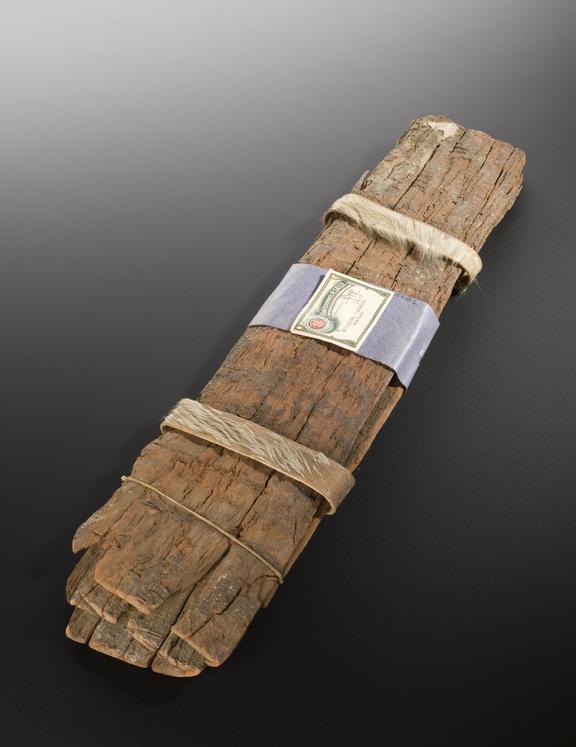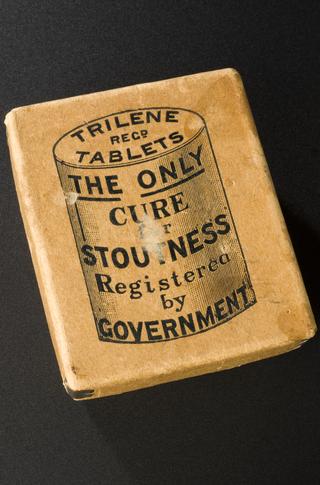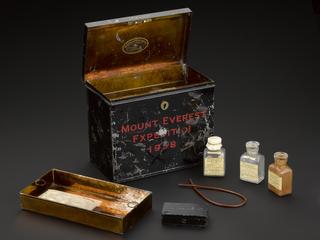




Specimens of cinchona bark, Quinquina Carabaya, prepared by F. Laurent, Paris, and supplied by H. Salle, Paris, France, 1930-1931
There are many species of cinchona. This sample is from Quinquina Carabaya, which is native to the Arequipa region of Peru and Arica region of Chile, both in South America. Quinine is the component of cinchona bark that was used for centuries to treat and prevent malaria. Quinine is extracted by a complex chemical process.
The sample was prepared by F Laurent, a pharmacist, at H Salle, a chemist and druggist shop, in Paris, France, in 1930-1931.
Details
- Category:
- Materia Medica & Pharmacology
- Collection:
- Sir Henry Wellcome's Museum Collection
- Object Number:
- A654696
- Measurements:
-
overall: 30 mm x 620 mm x 160 mm, 1.07kg
- type:
- sample
- credit:
- Salle, H.



